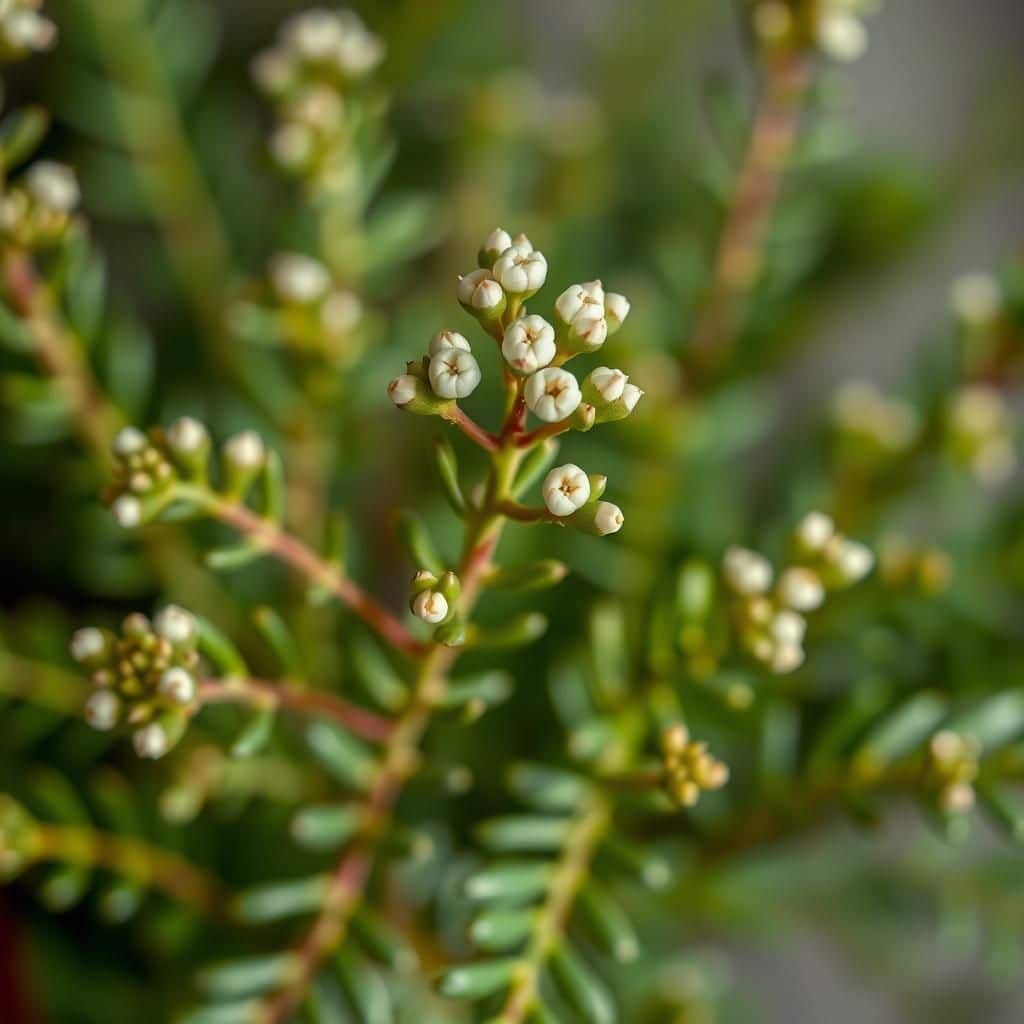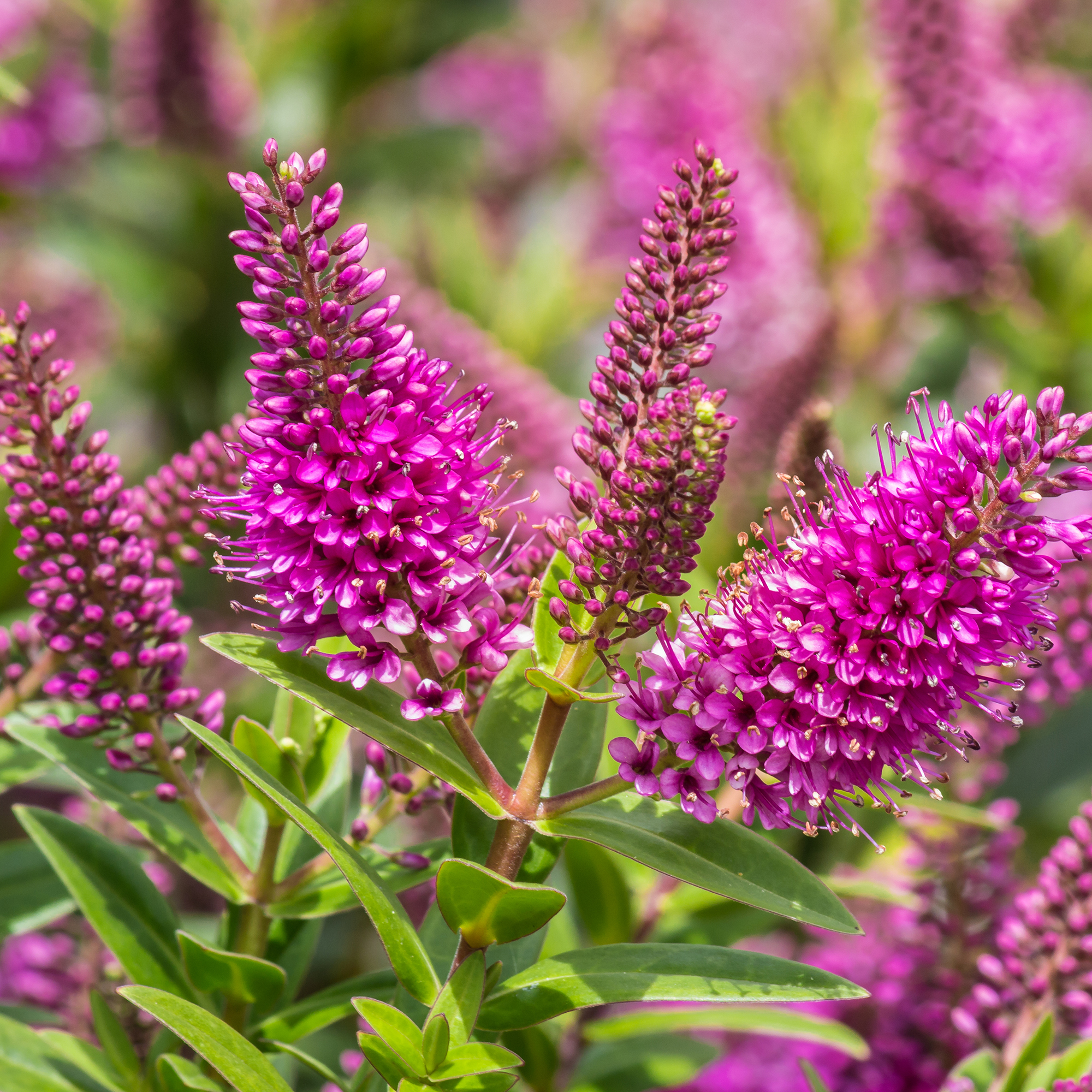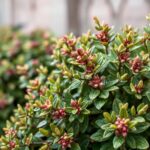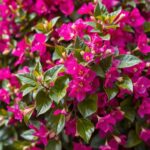What is the Lifespan of a Hebe? Essential Care Tips for a Thriving Plant

Hebe plants, known for their vibrant foliage and beautiful blooms, are popular choices for gardeners seeking to add color and texture to their landscapes. Understanding the lifespan of a Hebe and how to care for it effectively is crucial for ensuring its longevity and health. This article delves into the average lifespan of these hardy shrubs and shares essential care tips to help them thrive in your garden. Whether you're a seasoned horticulturist or a novice plant enthusiast, these insights will guide you in nurturing your Hebe and enjoying its stunning presence for years to come.
What is the Lifespan of a Hebe?
The average lifespan of a hebe plant typically ranges from 5 to 15 years, depending on various factors such as the specific variety, environmental conditions, and overall care and maintenance. Hebes are hardy and resilient perennials native to New Zealand and can thrive in a variety of climates. However, factors like soil quality, exposure to sunlight, and susceptibility to diseases can influence their longevity. Ensuring that they receive adequate drainage, proper nutrition, and protection from extreme weather conditions can significantly extend their lifespan and vitality.
Factors Influencing Lifespan
Several factors can influence the lifespan of a hebe plant. These include soil health, watering practices, and exposure to elements like wind and frost. Well-drained, nutrient-rich soil promotes healthy root systems, while consistent but moderate watering prevents root rot. Moreover, planting hebes in sheltered spots can protect them from harsh weather, increasing their overall resilience and lifespan.
Common Varieties and Their Lifespan
Different varieties of hebe can have varying lifespans. For instance, Hebe 'Red Edge' and Hebe 'Bressingham' are known for their vigorous growth and can live up to 15 years with proper care, whereas some smaller varieties may have shorter lifespans. Understanding the specific needs and traits of each variety is essential for maintaining their health and longevity.
Maintenance for Longevity
Proper maintenance is crucial for prolonging the lifespan of hebes. This includes regular pruning to remove dead or diseased branches, ensuring adequate watering without over-saturating the soil, and applying appropriate fertilizers during the growing season. Additionally, monitoring for pests and diseases and taking immediate action can prevent issues that could negatively impact plant health and lifespan.
Environmental Impact
The environmental conditions where hebes are planted greatly affect their lifespan. Factors such as climate, soil composition, and exposure to sunlight play critical roles in their growth and development. Hebes thrive in well-drained soil with full sun to partial shade, but extreme temperatures, such as frost or drought, can significantly reduce their lifespan if not managed properly.
Signs of Aging in Hebes
As hebe plants age, certain signs may indicate that their lifespan is nearing its end. Yellowing leaves, reduced blooming, and overall decline in vigor are common symptoms. Additionally, if a hebe becomes woody and less productive, this may signal that the plant is aging. Regular observation and care can help gardeners identify these signs early, allowing for potential rejuvenation techniques or replacement planning.
| Factor | Impact on Lifespan |
|---|---|
| Soil Quality | Healthy soil promotes growth; poor soil can shorten lifespan. |
| Watering Practices | Overwatering can lead to root rot; moderate watering extends life. |
| Climate | Favorable climates support longer lives; extreme weather reduces lifespan. |
| Variety | Some varieties naturally have longer lifespans than others. |
| Pest Management | Unaddressed pests can lead to decline; proper management sustains health. |
How long does hebe live?

Hebe plants, scientifically known as Hebe spp., are popular evergreen shrubs known for their attractive foliage and flowers. The lifespan of a hebe plant can vary significantly depending on several factors, including the species, growing conditions, and care practices. Generally, most hebes can live anywhere from 5 to 15 years, with some exceptional varieties potentially living even longer under optimal conditions.
Factors Affecting Hebe Lifespan
The lifespan of a hebe can be influenced by various factors such as climate, soil quality, and disease resistance. Understanding these can help in prolonging their life.
- Climate: Hebes thrive in temperate climates and can struggle in extreme heat or cold.
- Soil Quality: Well-draining soil enriched with nutrients supports healthy growth.
- Pests and Diseases: Regular monitoring for pests like aphids and diseases can prevent premature death.
Different Hebe Species
There are many species of hebes, and their lifespans can differ based on genetic factors inherent to each type.
- Hebe pinguifolia: This species is known to live longer in favorable conditions and can exceed 15 years.
- Hebe rakaiensis: Commonly found in gardens, this variety generally has a lifespan of about 5 to 10 years.
- Hebe salicifolia: Tends to be hardier and can live longer, sometimes up to 20 years.
Optimal Growing Conditions
Providing optimal conditions plays a crucial role in extending the life of a hebe plant.
See also:
- Sunlight: Most hebes prefer full sun or partial shade, which promotes healthy growth.
- Watering: Regular watering helps maintain soil moisture but avoid waterlogging.
- Fertilization: Using a balanced fertilizer can help promote growth and flowering.
Maintenance Practices
Regular maintenance and care can significantly enhance the lifespan of hebe plants.
- Pruning: Regular pruning helps shape the plant and encourages new growth.
- Pest Control: Employing organic or chemical solutions to manage pests can prevent damage.
- Mulching: Applying mulch can retain soil moisture and suppress weeds.
Signs of Decline in Hebe Plants
Recognizing the signs of decline early can help gardeners take action to save their hebes.
- Wilting Leaves: This can indicate dehydration or root issues.
- Discoloration: Yellowing leaves may suggest nutrient deficiencies or disease.
- Pest Infestation: Visible pests or damage can lead to the plant's demise if not addressed.
Why do my hebes look dead?

Your hebes may appear dead due to several factors that can affect their health and growth. Understanding these reasons can help you diagnose the issue and take corrective actions. Here are some common reasons why your hebes look dead:
Environmental Stress
Hebes can suffer from extreme environmental stress due to sudden changes in temperature, humidity, or exposure to harsh conditions. This stress can cause the leaves to wilt and turn brown.
- Temperature fluctuations: Sudden drops or increases in temperature can shock the plant.
- Humidity levels: Low humidity can lead to dehydration, while too much humidity can promote rot.
- Wind exposure: Strong winds can damage leaves and stems.
Pests and Diseases
Insects or diseases can significantly affect the vitality of hebes. Common pests like aphids and spider mites can weaken the plant, making it look lifeless.
- Aphids: These small insects suck sap from the leaves, causing them to curl and wilt.
- Spider mites: They thrive in dry conditions and can cause yellowing and webbing on the leaves.
- Fungal diseases: Overwatering can cause root rot and affect the overall health of the plant.
Improper Watering
Both overwatering and underwatering can lead to a decline in the health of hebes. Finding the right balance is crucial for their survival.
- Overwatering: This can lead to root rot, as the roots become waterlogged and oxygen-deprived.
- Underwatering: Insufficient moisture can cause leaves to dry out and fall off.
- Drainage: Poor soil drainage can exacerbate both problems, trapping excess water in the soil.
Soil Quality
The type of soil used can also impact the health of hebes. Poor-quality soil may lack the necessary nutrients or proper drainage for optimal growth.
- Nutrient deficiencies: Without adequate nutrients, hebes may not thrive and can exhibit stunted growth.
- Soil pH: The pH level can affect nutrient availability; hebes prefer slightly acidic to neutral pH.
- Soil compaction: Compacted soil can restrict root growth and water absorption.
Seasonal Changes
Hebes can behave differently during various seasons, which may contribute to their appearance. Seasonal stress can manifest as wilting or leaf drop.
- Winter dormancy: Hebes may lose leaves during colder months as they go dormant.
- Summer heat: Excessive heat can lead to wilting and scorched leaves.
- Sunlight exposure: Changes in sunlight exposure throughout the seasons can affect growth patterns.
Do hebes last all year?

Do Hebes Last All Year?
Hebes are beloved for their aesthetic appeal and versatile use in gardens, but their lifespan can vary depending on the species and environmental conditions. Generally, hebes are perennial shrubs, meaning they can last for multiple years. However, their foliage and flowering phase may not be present throughout the entire year. The duration of their vibrancy can be affected by factors like climate, maintenance, and soil conditions. In regions with milder winters, hebes can maintain a year-round presence, while harsher climates may see them dormant during colder months.
Factors Affecting Hebe Longevity
Several key factors influence how long hebes last and how well they thrive throughout the year:
See also:
- Climate: Hebes prefer temperate climates and may struggle in extreme temperatures.
- Soil Quality: Well-draining soil rich in organic matter supports longer-lasting growth.
- Watering Practices: Consistent but not overwatering ensures healthy root systems.
Seasonal Changes and Hebe Care
As seasons change, the care requirements for hebes evolve. Understanding these seasonal needs is crucial for their longevity:
- Spring: Regular watering and application of fertilizer promote healthy growth.
- Summer: Ensure adequate moisture during hot months, while trimming spent flowers can encourage new blooms.
- Winter: In colder areas, provide protection against frost to preserve plant health.
Top Varieties of Hebes
Certain varieties of hebes are known for their particularly robust growth and resilience, contributing to their ability to thrive year-round:
- Hebe 'Heartbreaker': Known for its vibrant pink flowers and sturdy structure.
- Hebe 'Mrs. McBeath': A hardy option with creamy white blossoms, ideal for various climates.
- Hebe 'Cool Rainbow': Features colorful foliage that enhances visual interest throughout the year.
Common Pests and Diseases
Like any plant, hebes are susceptible to pests and diseases that can impact their lifespan:
- Powdery Mildew: A fungus that can cause white spots on leaves, reducing plant vitality.
- Aphids: These small insects can sap plant energy, leading to stunted growth.
- Leaf Spot: Caused by various fungi, it can lead to unsightly blemishes and leaf drop.
Maintaining Healthy Hebes Year-Round
Proper maintenance plays a significant role in ensuring hebes remain vibrant and healthy throughout the year:
- Regular Pruning: Helps stimulate new growth and maintain desired shape.
- Fertilization: Using a balanced fertilizer can improve plant health and flowering.
- Mulching: Protects the roots and retains moisture, especially during dry spells.
Can you cut a hebe back hard?

Understanding Hebes
Hebes, also known as Hebe spp., are popular ornamental shrubs native to New Zealand. They are often prized for their lush foliage and vibrant flowers. The genus Hebe encompasses a variety of species, each differing in size and color. Understanding their growth habit is essential when considering how to properly prune them. Typically, these shrubs can range from compact forms suitable for borders to larger ones that can serve as focal points in garden beds.
- Origin: Native to New Zealand and the surrounding islands.
- Features: Known for colorful flowers and attractive foliage.
- Variety: Includes both low-growing and taller, larger species.
What Does 'Cutting Back Hard' Mean?
Cutting back hard refers to the practice of pruning plants significantly, often to promote new growth and improve the plant's overall health. This method can create a more compact shape and encourage stronger flower production. When it comes to Hebes, this typically involves cutting the stems down to a few inches from the ground. While many gardeners adopt this technique, it is essential to know the right time and method for pruning.
- Low Height: Often involves pruning to a height of 6-8 inches.
- Promotes Growth: Encourages new shoots and a bushier plant.
- Timing: Ideal during spring or late winter before new growth starts.
Benefits of Hard Pruning Hebes
Hard pruning Hebes can provide a variety of benefits, allowing the plant to rejuvenate, enhance its aesthetic appeal, and promote blooming. This method not only controls the size but can also help in maintaining the overall health of the plant. Additionally, it can extend the life of the Hebe and keep it looking vibrant and lush.
- New Growth: Promotes strong, healthy new growth.
- Shape Maintenance: Helps maintain a desired shape and size over time.
- Improved Blooms: Can lead to an increase in flowering in the following season.
Considerations Before Hard Pruning
Before deciding to cut back a Hebe hard, it is crucial to consider various factors that influence the outcome. Factors like the specific variety of Hebe, its health, and the season can all impact the success of this pruning method. A few things to keep in mind include assessing the plant's current condition and understanding the type of Hebe you are tending to.
- Plant Health: Ensure the Hebe is healthy enough to withstand hard pruning.
- Type of Hebe: Some species respond better to hard pruning than others.
- Season Timing: Avoid pruning during fall or winter, as this can stress the plant.
Aftercare for Pruned Hebes
Post-pruning care is crucial to help the plant recover and thrive after being cut back hard. Providing the right aftercare ensures robust new growth and can improve flowering. Key aspects of aftercare include proper watering, fertilizing, and monitoring for diseases or pests.
- Watering: Ensure the plant is adequately watered but avoid over-watering.
- Fertilizing: Apply a balanced fertilizer to encourage new growth.
- Pest Monitoring: Regularly check for signs of pests or diseases after pruning.
Questions from Our Readers
What is the typical lifespan of a hebe plant?
The typical lifespan of a hebe plant can range from 5 to 10 years, depending on the specific variety and environmental conditions in which it is grown.
How can I extend the lifespan of my hebe?
To extend the lifespan of your hebe, ensure it is planted in well-draining soil, receives adequate water and sunlight, and is protected from harsh weather conditions and pests.
See also:
Are there specific hebe varieties that live longer?
Yes, certain hebe varieties are known to have a longer lifespan; for example, Hebe pinguifolia and Hebe rakaiensis are recognized for their hardiness and longevity in garden settings.
What factors can affect the lifespan of a hebe?
Several factors can affect the lifespan of a hebe, including climate, soil quality, watering practices, and potential exposure to diseases or pests.

If you want to read more articles like What is the Lifespan of a Hebe? Essential Care Tips for a Thriving Plant, we recommend you check out our Shrubs category.
Leave a Reply
Related Articles